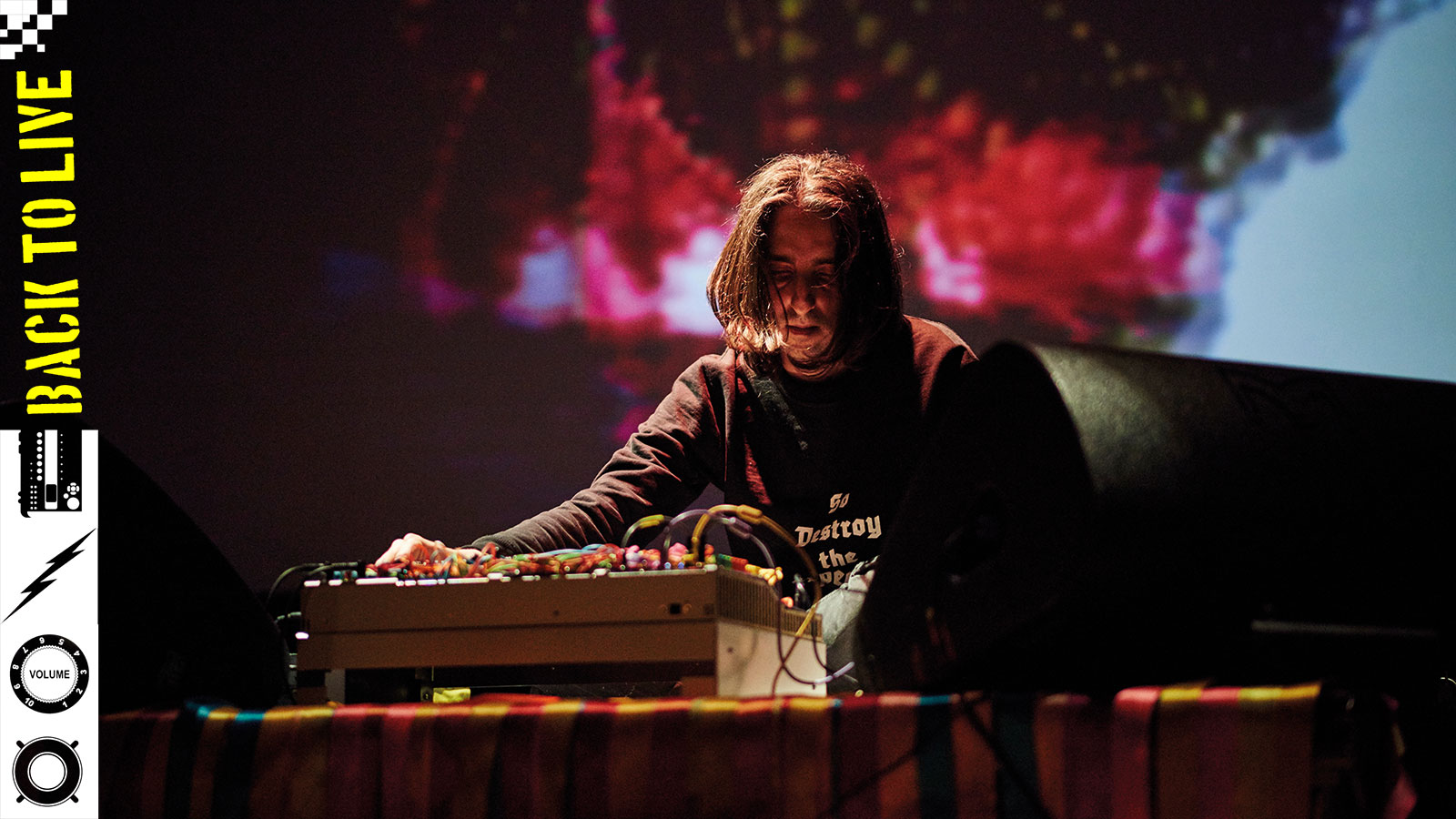Play to your strengths with these key tips for taking electronic music onstage
Back To Live: How to take digital music-making into the live world

BACK TO LIVE: In many ways, performing live can be a far more complicated affair for electronic musicians than a traditional band.
While a rock outfit might have decisions to make about what amps, drum kit or pedal setup to take on stage, for electronic solo acts or groups, you effectively have to devise the whole concept of your live set from the ground up.
You might have created some killer club tracks or a gorgeous ambient album in the studio, but how do you translate that live? What are you actually going to do on stage? And what gear will you do it with?
There’s no right or wrong way to answer this. It ultimately comes down to what you want to achieve and what your skills and resources will allow. Treat these tips as something to bear in mind as you plan...
1. Start small
Whether you’re performing live for the first time or building up a new setup, be careful not to overdo things too quickly. It might be tempting to load up with as much cool gear as possible - the latest synths, multiple drum machines, a stack of sequencers and controllers - but bear in mind your own limitations.
Even working in a group, you only have a certain amount of hands, and managing multiple hardware devices will make your performance exponentially more complex, with more to go wrong.
At least at first, it’s best to pick one or two instruments that you can really get familiar with, and practise creating cool performances with a limited setup - even if that means relying on a computer backing track or CDJs to play back some elements.
Want all the hottest music and gear news, reviews, deals, features and more, direct to your inbox? Sign up here.
2. Play to your strengths
It might sound obvious, but focus your live setup around what you’re actually good at.
Make sure you’re engaging with the software in an expressive way - one that’s interesting for your audience
In the studio, electronic producers tend to do everything - from inputting beats and melodies to creating out-there FX, and it might be tempting to try and prove you can do all of that live too. But realistically, if you’re not some virtuosic keyboard player, do you really need to be playing that eight-bar-chord part live, when a sequencer could handle it fine?
Instead, lean into the things that make you unique as a musician. Are you a talented drummer? Grab some percussion pads and get creative with MIDI triggering. More of a tweaker than a player? Then let the sequencers handle the patterns and get creative with filters and effects. Is someone in your group a great guitarist, vocalist, sax player, etc? Find a way to incorporate that into your live show.
3. Embrace the computer…
Laptop-based live shows often get a bad rap, which is understandable to an extent. At their worst, laptop focussed electronic performances can be dull and sterile - like watching someone check their email onstage while tracks play back with little audible human input. But it doesn’t have to be that way.
Realistically, if you’re looking to perform full electronic tracks as a solo artist or duo, DAWs such as Ableton Live, Bitwig Studio, Studio One, Apple Mainstage or FL Studio offer an invaluable set of tools that would be difficult and expensive to replicate with individual instruments.
The key is to make sure you’re engaging with the software in an expressive way, and one that’s interesting for your audience. Make use of controllers to play and trigger sounds, and turn parameter adjustments into something tactile and physical. And where possible, keep your focus off the screen and in the room.
4. …but don’t be afraid to step out-of-the-box
If you’re using more than one or two instruments, you may want some form of mixer onstage
All that being said, there are many benefits to taking a computer-free approach to live performance, or at least de-emphasising the laptop. For one thing, it will inevitably be more interactive, and may well look more visually interesting for your audience too.
Moreover, the restrictions of working away from the endless possibilities of a DAW can inspire you to structure your set in interesting ways, whether that involves using an analogue sequencer to trigger and manipulate patterns, or building up a lattice of overdubs using a looper pedal.
There’s also the reliability factor: if you’re not fully synced to a single digital clock source, there’s less risk of your entire performance grinding to a halt if you have a crash.
5. Consider your outputs
If you’re using more than one or two instruments, you may also want some form of mixer onstage; something that will allow you to blend, balance and mute different elements.
Consider what you’re sending to the venue’s PA/front of house desk. Summing everything down to a stereo master output on stage will give you more control, but will limit what a front of house engineer can do to adjust any wayward levels.
It’s worth having some kind of monitoring solution of your own, so you can hear what’s coming out of your master outputs and monitor elements of your setup without the audience hearing them, to cue up patterns or audition sounds.
Future Music is the number one magazine for today's producers. Packed with technique and technology we'll help you make great new music. All-access artist interviews, in-depth gear reviews, essential production tutorials and much more. Every marvellous monthly edition features reliable reviews of the latest and greatest hardware and software technology and techniques, unparalleled advice, in-depth interviews, sensational free samples and so much more to improve the experience and outcome of your music-making.
